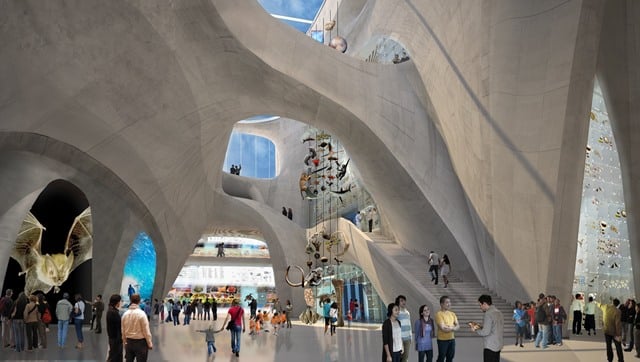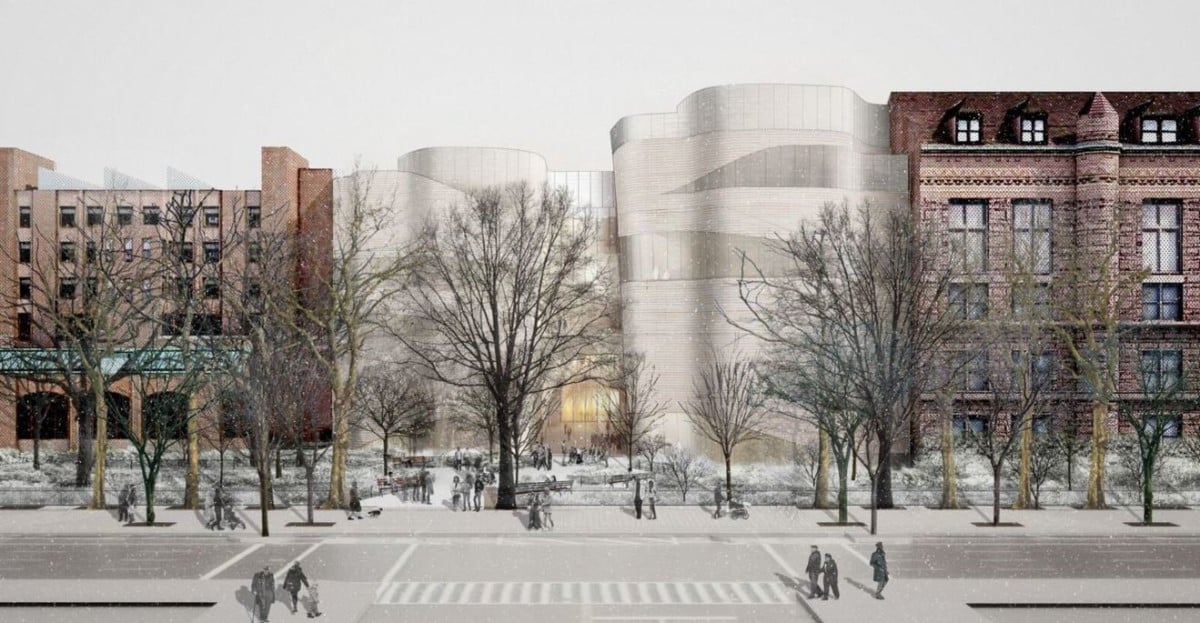Art World
Museum of Natural History Unveils Dramatic Design for New Building
The $325-million addition would add some 220,000 square feet to the space.

Courtesy of Studio Gang Architects.
The $325-million addition would add some 220,000 square feet to the space.

Brian Boucher

New York’s American Museum of Natural History has unveiled designs for its proposed expansion. The striking interior recalls a subterranean cave, with curving concrete walls.
The $325-million addition by the Chicago architect and MacArthur fellow Jeanne Gang would add nearly 220,000 square feet at a museum whose annual attendance has nearly doubled over several decades. The Richard Gilder Center for Science, Education, and Innovation would be an entirely new building with a façade facing Columbus Avenue. It’s named for the museum trustee who has donated some $50 million for the new facility.
If approved, construction is planned to commence in 2017. The museum aims to open the Gilder Center in 2020.

The facade of Jeanne Gang’s design for the new building proposed by the American Museum of Natural History.
Courtesy of Studio Gang Architects.
“Upon entering the space, natural daylight from above and sightlines to various activities inside invite movement through the Central Exhibition Hall on a journey towards deeper understanding,” Gang says in a statement. Niches formed by the soaring arches in the dramatic central exhibition hall will form niches for displays.
One controversial aspect of the museum’s proposed expansion is its potential effect on the city-owned Theodore Roosevelt Park, which surrounds the museum, which is located on Central Park West on the Upper East Side of Manhattan. To allay concerns of those opposed to the expansion, the museum plans to tear down three existing buildings to make way for the expansion, which would take up only about a quarter of an acre of the park.
The new building would connect to no fewer than 10 existing buildings, improving circulation throughout the institution, which was founded in 1869.